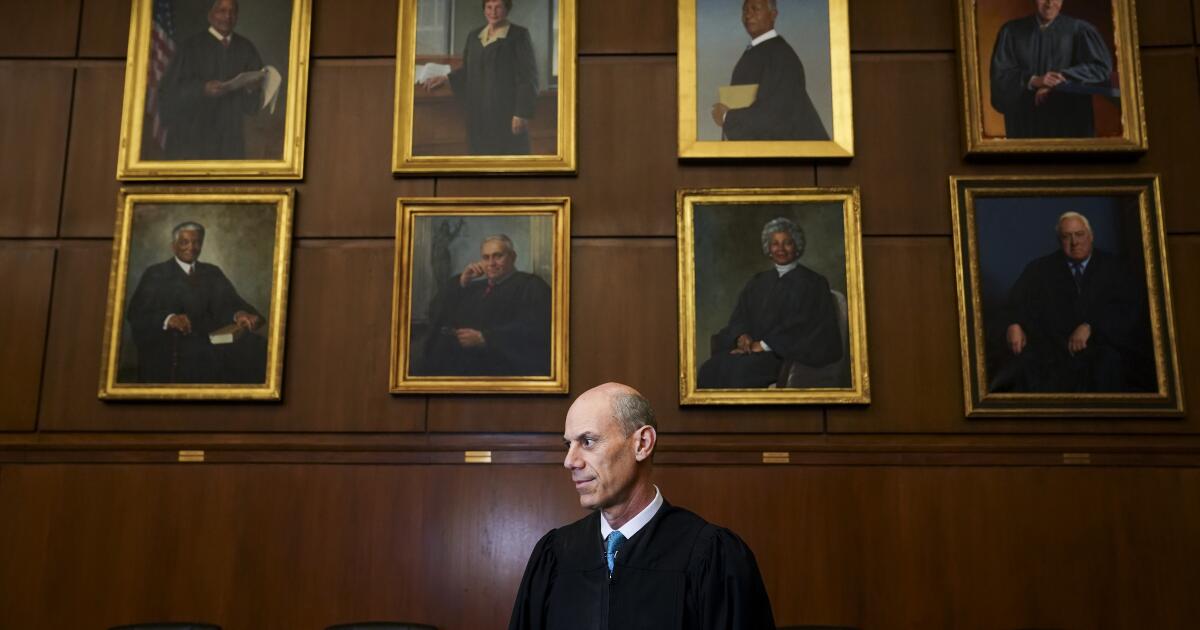Justice Department asks appeals court to block judge’s contempt inquiry in mass deportation case
WASHINGTON — The Justice Department on Friday asked an appeals court to block a contempt investigation of the Trump administration for failing to turn around planes carrying Venezuelan migrants to El Salvador in March.
The department also is seeking Chief Judge James Boasberg’s removal from the case, which has become a flashpoint in an escalating fight between the judiciary and the White House over court orders blocking parts of President Trump’s sweeping agenda.
The department wants the U.S. Court of Appeals for the District of Columbia Circuit to rule on its requests before Monday, when Boasberg is scheduled to hear testimony from a former government attorney who filed a whistleblower complaint.
Department officials claim Boasberg is biased and creating “a circus that threatens the separation of powers and the attorney-client privilege alike.”
“The forthcoming hearing has every appearance of an endless fishing expedition aimed at an ever-widening list of witnesses and prolonged testimony. That spectacle is not a genuine effort to uncover any relevant facts,” they wrote.
Boasberg, who was nominated to the bench by Democratic President Obama, has said that a recent ruling by the appeals court gave him the authority to proceed with the contempt inquiry. The judge is trying to determine whether there is sufficient evidence to refer the matter for prosecution.
Boasberg, who has been chief judge of the district court in Washington since March 2023, has said the Trump administration may have “acted in bad faith” by trying to rush Venezuelan migrants out of the country in defiance of his order blocking their deportations to El Salvador.
The Trump administration has denied any violation, saying the judge’s March 15 directive to return the planes was made verbally in court but not included in his written order.
Boasberg has scheduled a hearing on Monday for testimony by former Justice Department attorney Erez Reuveni, whose whistleblower complaint claims a top department official suggested the Trump administration might have to ignore court orders as it prepared to deport Venezuelan migrants.
The judge also scheduled a hearing on Tuesday for testimony by Deputy Assistant Atty. Gen. Drew Ensign. The Justice Department has said Ensign conveyed Boasberg’s March 15 oral order and a subsequent written order to the Department of Homeland Security.
“This long-running saga never should have begun; should not have continued at all after this Court’s last intervention; and certainly should not be allowed to escalate into the unseemly and unnecessary interbranch conflict that it now imminently portends,” department officials said in Friday’s court filing.
Kunzelman writes for the Associated Press.
